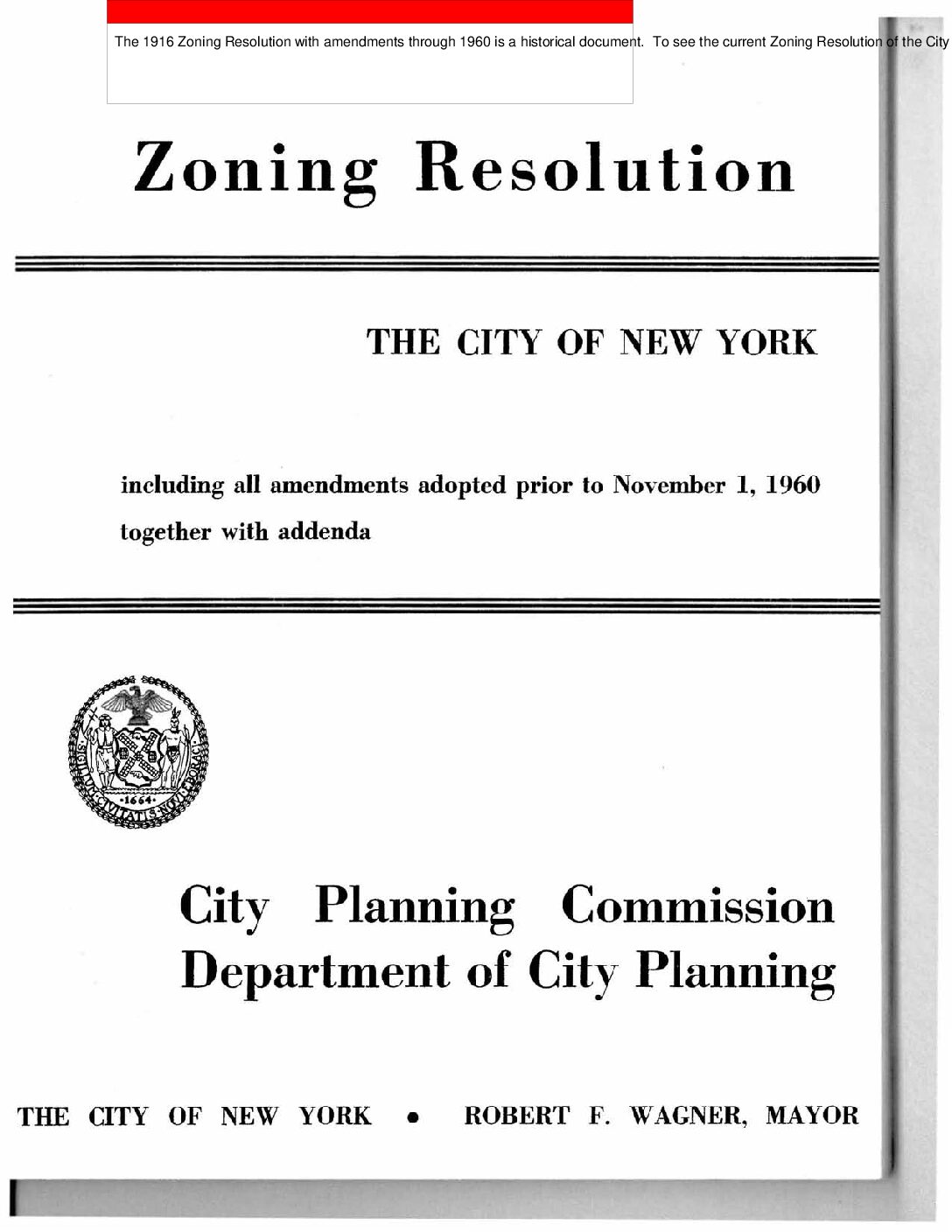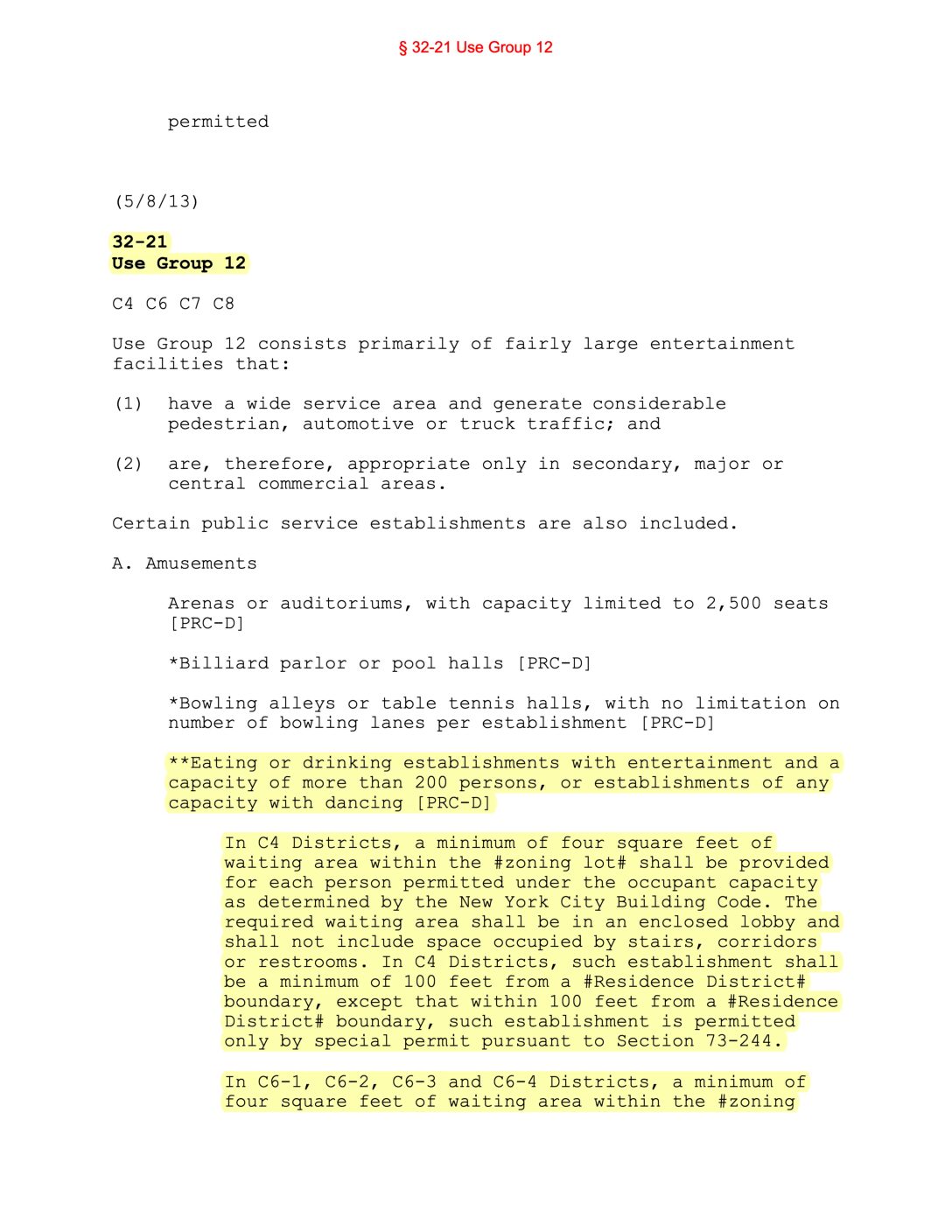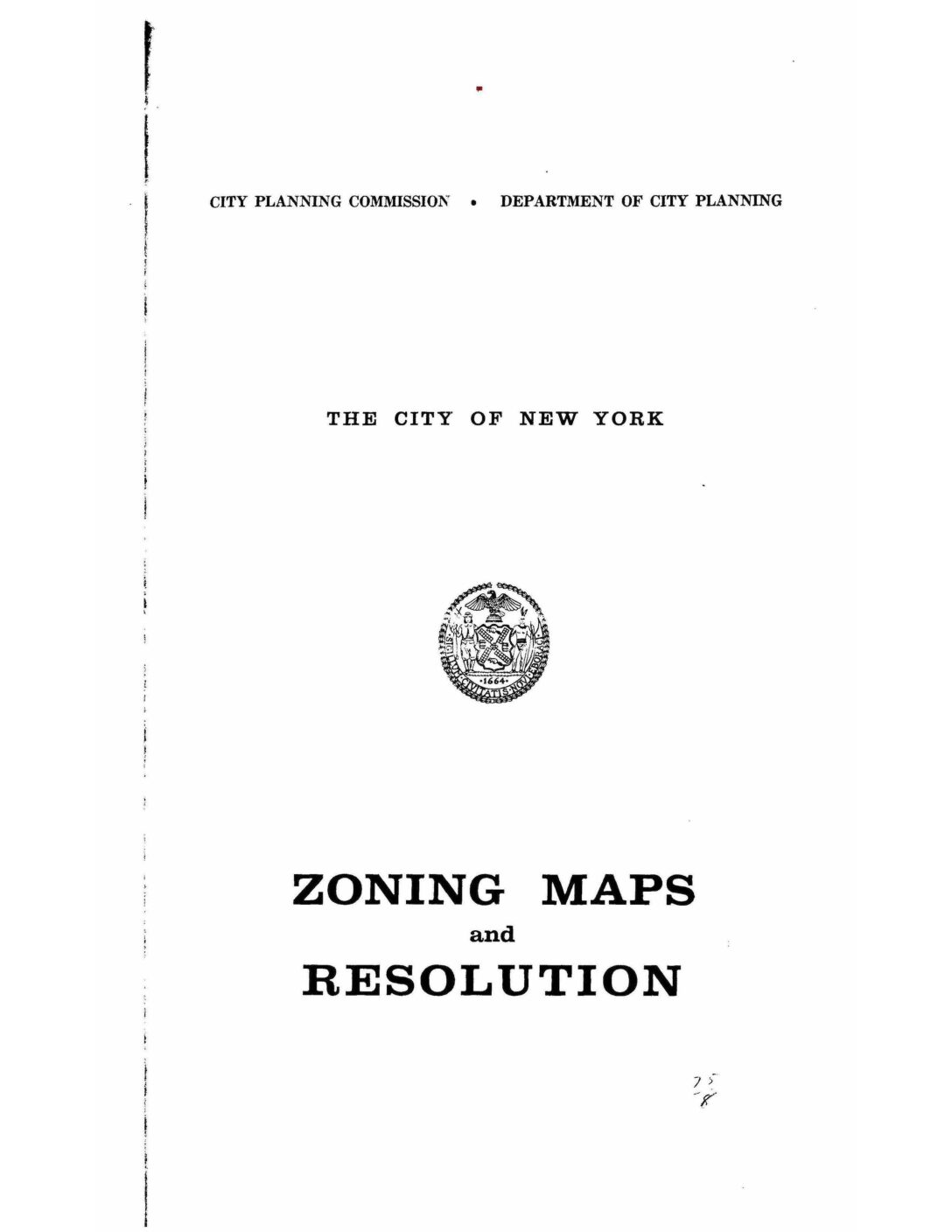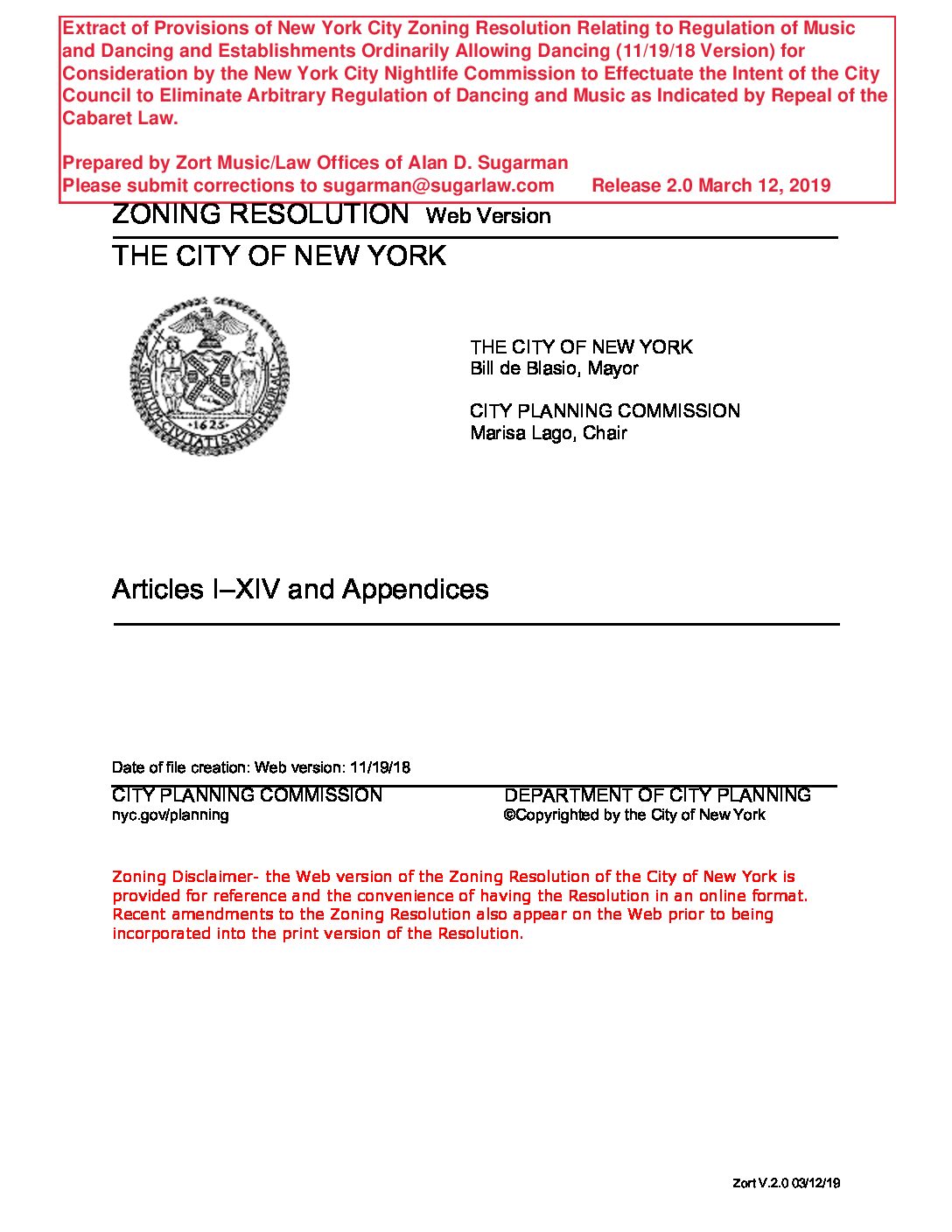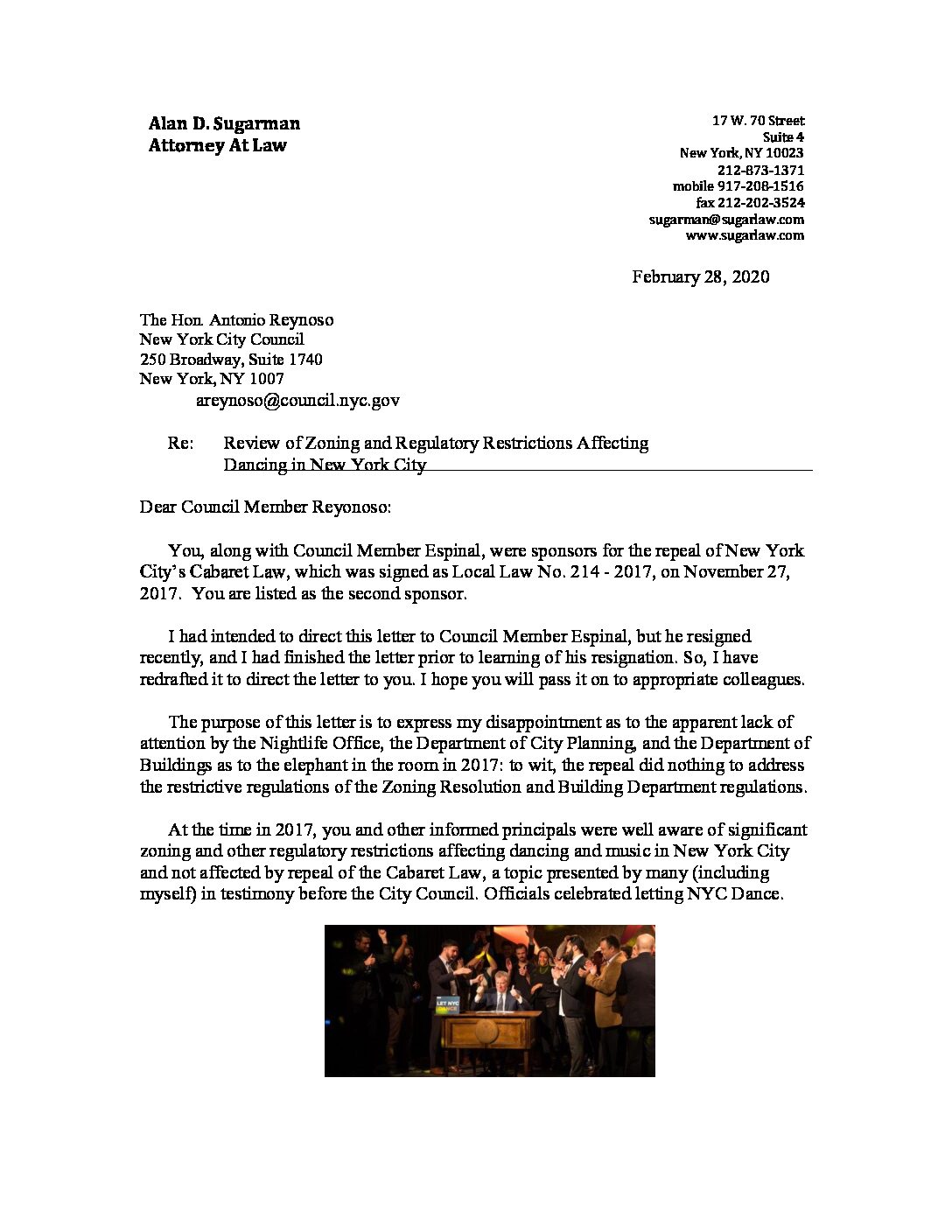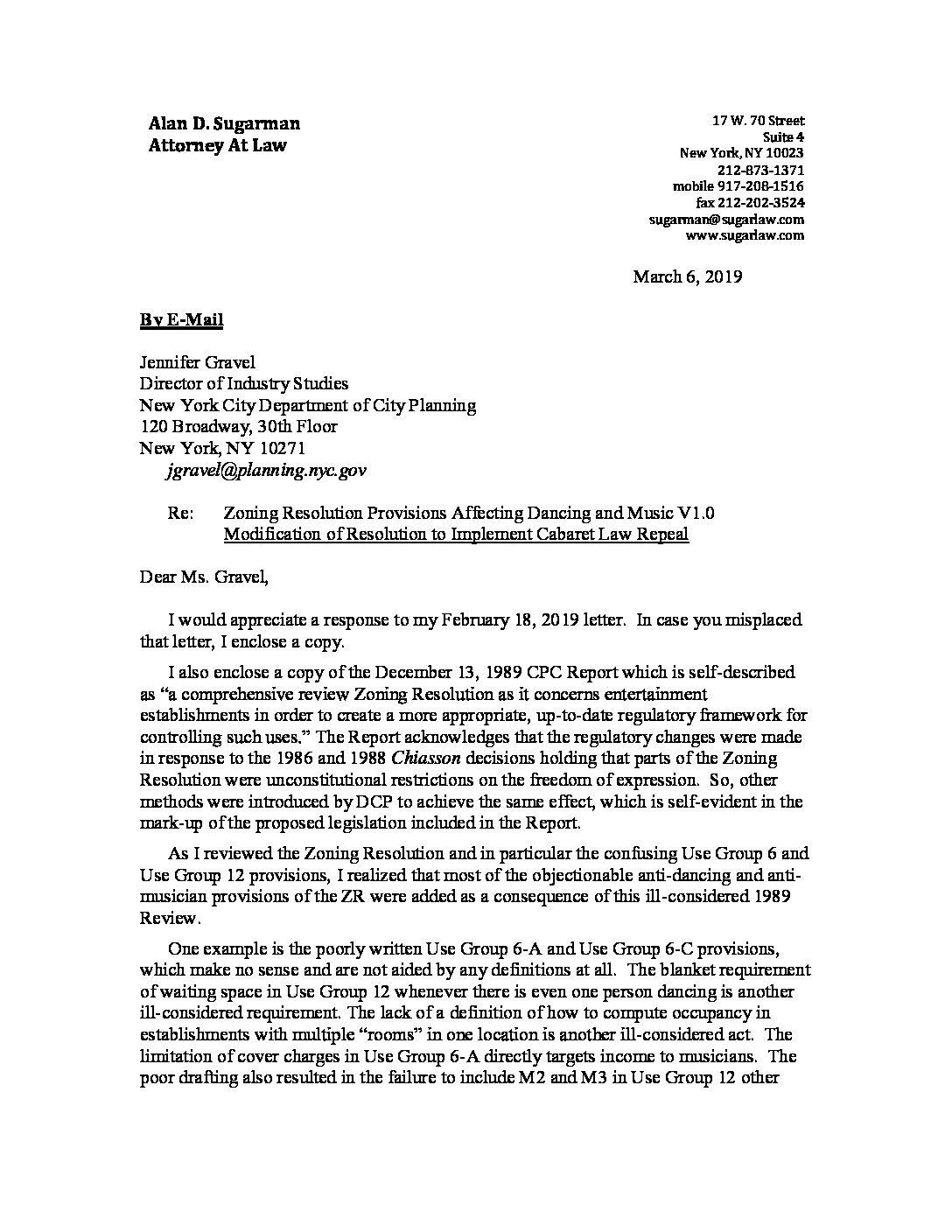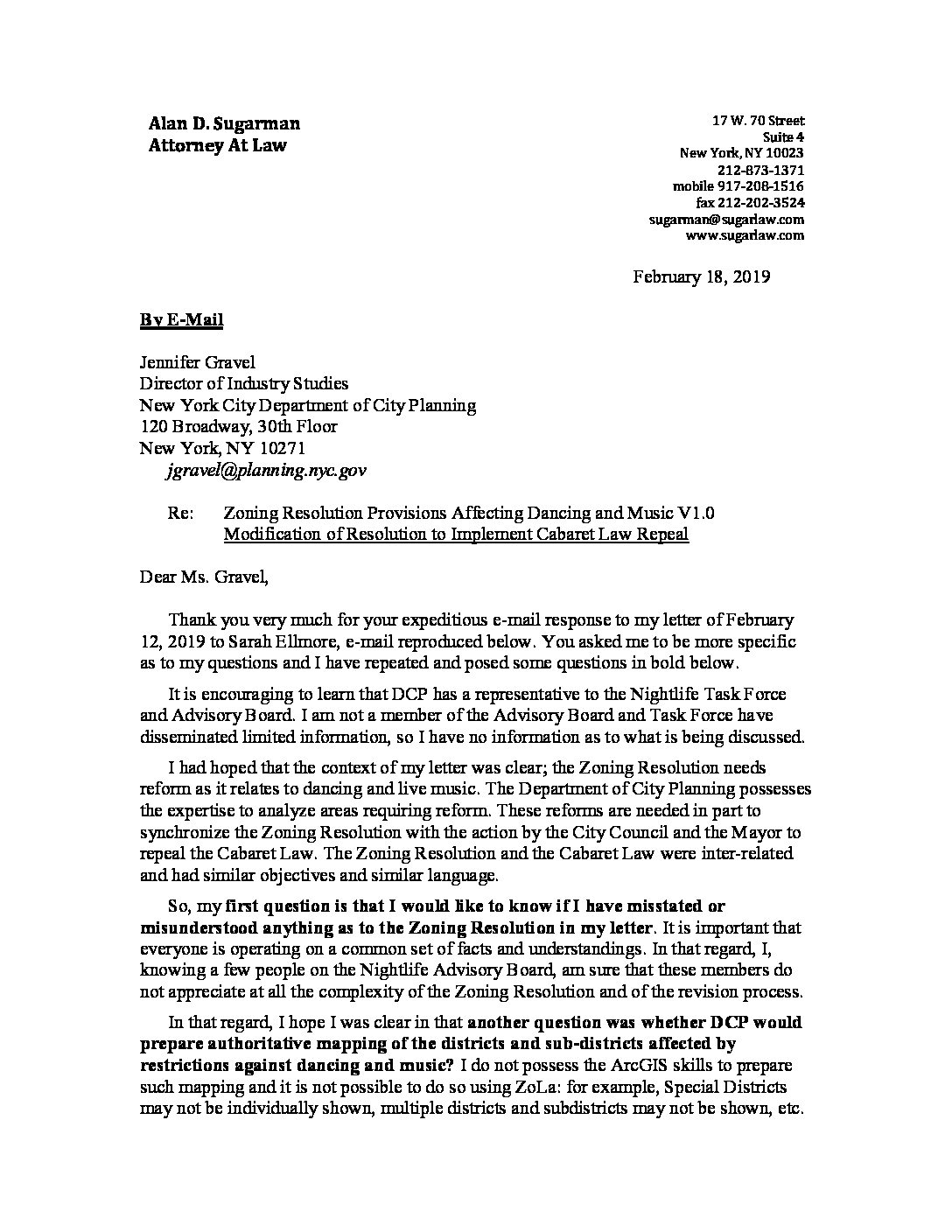The 1916 Zoning Resolution as amended prior to 1961 included provision restricting the location of cabarets, defined to include dancing and music but not restaurants with fewer than three instruments. This provision was added to the 1916 resolution in 1955.
Document Category: Zoning Resolution
Use Group 12 §32-21
Use Group 12 applies in purely commercial and manufacturing areas and allows establishments with dancing.
Use Group 6 §32-15
Use Group 6 applies in mixed commercial-residential areas. In eating and drinking establishments, does not allow dancing or music if there is a cover charge, so that venues cannot cover the cost of hiring musicians.
Chevigny – Gigs: Jazz and the Cabaret Laws in New York City
Constitutional Law Attorney and Counsel for Plaintiffs in Chevigny and Festa Cases book on the Cabaret Law and litigation to eliminate restrictions against music.
1961 Zoning Resolution Use Groups – Music and Dancing
The 1961 Zoning Resolution introduced provisions allowing in Use Groups 6 and 12 musical instruments to be played without obtaining a cabaret license, limiting the number of instruments to three, and restricting the type of instruments to “piano, organ, accordion, guitar, or any string instrument.”
Zoning Resolution – Provisions Relating to Dancing and Music
The Zoning Resolution is over 3400 pages long. There are many provisions related to dancing and music which are not well known, outside of the notorious provisions banning dancing in Use Group 6 and allowing dancing in Use Group 12. We searched through the Zoning Resolution for all references to dancing and music, and provide this extract of relevant provisions. This extract was provided to the Nightlife Office and the CPC and to various City Council members.
Letter to Council Member Reynoso February 28, 2020
Letter to City Council concerning lack of action in reforming the Zoning Resolution bans on dancing, after the 2017 repeal of the Cabaret Law which had little impact on increasing venues offering dancing.
Letter 3-06-2019 to Department of City Planning Requesting Review of Zoning Resolution re Dancing
Third letter to Department of City Planning discussing the 1989 changes to the Zoning Resolution made in response to the Chiasson cases striking down portions of the Cabaret Law as to music performances, and noting the lack of response to prior letters. There was no response to this letter. On conclusion is that the DeBlasio administration had no intention to move forward with removal or restrictions against dancing.
Letter 2-18-2019 to Department of City Planning Requesting Review of Zoning Resolution re Dancing
Second 2019 letter requesting Department of City Planning to take the lead in providing a zero-based analysis of each provision of the Zoning Resolution affecting dancing and requesting mapping to show areas in City where dancing was banned.
1989 Report City Planning Commission and 1990 Amendments.
After the Chiasson cases holding that the Cabaret Law could not restrict the number or types of musicians, the City responded in 1989 by amending the Zoning Resolution and burying the restrictions against music and dancing. The report clearly acknowledged the purpose of the zoning amendments.
